The efficacy of the food-grade antimicrobial xanthorrhizol against Staphylococcus aureus is associated with McsL channel expression
- PMID: 39021623
- PMCID: PMC11251944
- DOI: 10.3389/fmicb.2024.1439009
The efficacy of the food-grade antimicrobial xanthorrhizol against Staphylococcus aureus is associated with McsL channel expression
Abstract
Background: The emergence and spread of multidrug-resistant Staphylococcus aureus strains demonstrates the urgent need for new antimicrobials. Xanthorrhizol, a plant-derived sesquiterpenoid compound, has a rapid killing effect on methicillin-susceptible strains and methicillin-resistant strains of S. aureus achieving the complete killing of staphylococcal cells within 2 min using 64 μg/mL xanthorrhizol. However, the mechanism of its action is not yet fully understood.
Methods: The S. aureus cells treated with xanthorrhizol were studied using optical diffraction tomography. Activity of xanthorrhizol against the wild-type and mscL null mutant of S. aureus ATCC 29213 strain was evaluated in the time-kill assay. Molecular docking was conducted to predict the binding of xanthorrhizol to the SaMscL protein.
Results: Xanthorrhizol treatment of S. aureus cells revealed a decrease in cell volume, dry weight, and refractive index (RI), indicating efflux of the cell cytoplasm, which is consistent with the spontaneous activation of the mechanosensitive MscL channel. S. aureus ATCC 29213ΔmscL was significantly more resistant to xanthorrhizol than was the wild-type strain. Xanthorrhizol had an enhanced inhibitory effect on the growth and viability of exponentially growing S. aureus ATCC 29213ΔmscL cells overexpressing the SaMscL protein and led to a noticeable decrease in their viability in the stationary growth phase. The amino acid residues F5, V14, M23, A79, and V84 were predicted to be the residues of the binding pocket for xanthorrhizol. We also showed that xanthorrhizol increased the efflux of solutes such as K+ and glutamate from S. aureus ATCC 29213ΔmscL cells overexpressing SaMscL. Xanthorrhizol enhanced the antibacterial activity of the antibiotic dihydrostreptomycin, which targets the MscL protein.
Conclusion: Our findings indicate that xanthorrhizol targets the SaMscL protein in S. aureus cells and may have important implications for the development of a safe antimicrobial agent.
Keywords: MscL; Staphylococcus aureus; food-grade antimicrobial; mutants; xanthorrhizol.
Copyright © 2024 Mordukhova, Kim, Jin, No and Pan.
Conflict of interest statement
EM and J-GP were employed by GenoFocus Ltd. The remaining authors declare that the research was conducted in the absence of any commercial or financial relationships that could be construed as a potential conflict of interest.
Figures
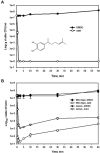
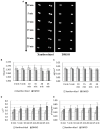
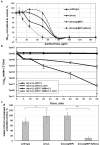


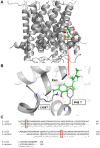
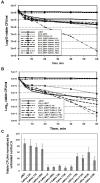
Similar articles
-
Activity of aurisin A isolated from Neonothopanus nambi against methicillin-resistant Staphylococcus aureus strains.Saudi Pharm J. 2023 May;31(5):617-625. doi: 10.1016/j.jsps.2023.03.002. Epub 2023 Mar 8. Saudi Pharm J. 2023. PMID: 37181147 Free PMC article.
-
S. aureus MscL is a pentamer in vivo but of variable stoichiometries in vitro: implications for detergent-solubilized membrane proteins.PLoS Biol. 2010 Dec 7;8(12):e1000555. doi: 10.1371/journal.pbio.1000555. PLoS Biol. 2010. PMID: 21151884 Free PMC article.
-
The Killing Mechanism of Teixobactin against Methicillin-Resistant Staphylococcus aureus: an Untargeted Metabolomics Study.mSystems. 2020 May 26;5(3):e00077-20. doi: 10.1128/mSystems.00077-20. mSystems. 2020. PMID: 32457238 Free PMC article.
-
Antibacterial activity of Lagerstreomia speciosa and its active compound, corosolic acid, enhances cefotaxime inhibitory activity against Staphylococcus aureus.J Appl Microbiol. 2023 Aug 1;134(8):lxad171. doi: 10.1093/jambio/lxad171. J Appl Microbiol. 2023. PMID: 37541956
-
Sulopenem: An Intravenous and Oral Penem for the Treatment of Urinary Tract Infections Due to Multidrug-Resistant Bacteria.Drugs. 2022 Apr;82(5):533-557. doi: 10.1007/s40265-022-01688-1. Epub 2022 Mar 16. Drugs. 2022. PMID: 35294769 Review.
References
-
- Choi M. A., Kim S. H., Chung W. Y., Hwang J. K., Park K. K. (2005). Xanthorrhizol, a natural sesquiterpenoid from Curcuma xanthorrhiza, has an anti-metastatic potential in experimental mouse lung metastasis model. Biochem. Biophys. Res. Commun. 326, 210–217. doi: 10.1016/j.bbrc.2004.11.020 - DOI - PubMed
LinkOut - more resources
Full Text Sources
Molecular Biology Databases
Miscellaneous

